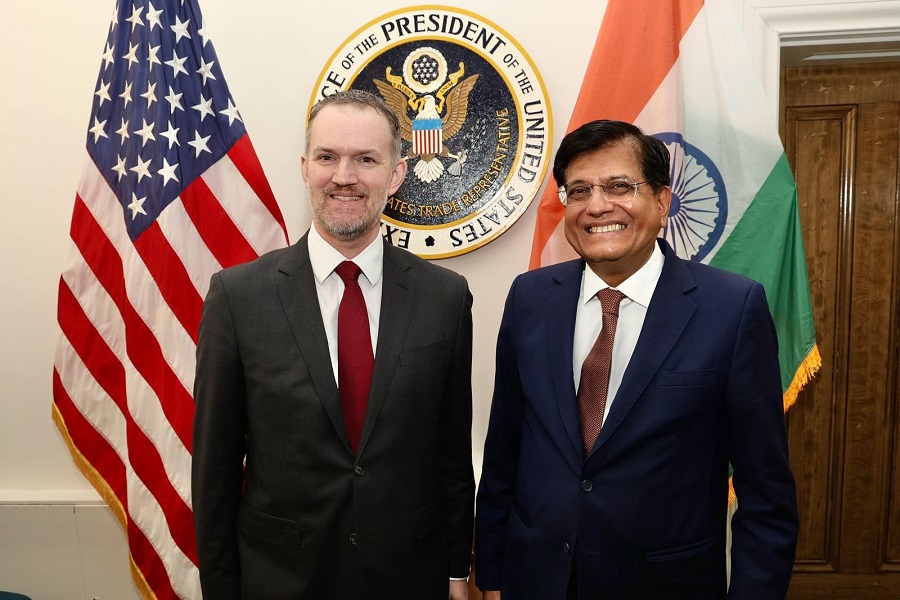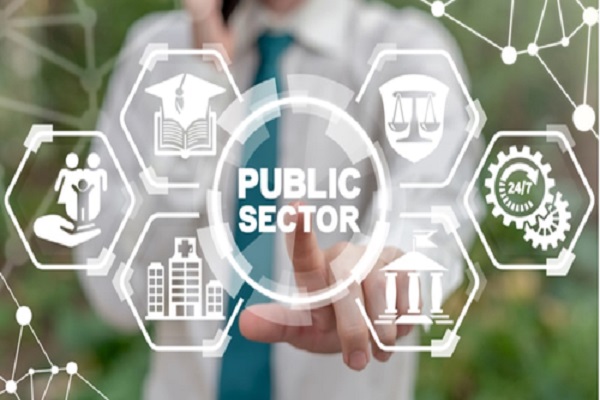Kotak Institutional Equities: Electric Utilities: Earnings offer no surprise; multiples continue to do

Earnings offer no surprise; multiples continue to do
Electric utilities have rallied up to 34% in the past six months on the back of an expected increase in investments for setting up new power capacities and related T&D infrastructure. While we do concede the need for new investments following the moderated pace of capacity addition in the past decade, we highlight that the earnings benefit from such investments will only trickle in beyond FY2030, implying an early-teen CAGR in earnings for private utilities, and single-digit growth for the larger PSUs. The valuation multiples (19X P/E and 2.5X P/B), on the other hand, seem to imply stronger earnings growth and perfect execution, both of which are at risk.
India’s power demand grew 7.3% yoy in FY2024, 5% CAGR over last five years
India’s power demand stood at 1,626 BU (186 GWh) in FY2024, growing by 7.3% yoy, in line with the 7.2% yoy GDP growth. This puts the 5-year CAGR in power demand at 5% yoy, against a 4.4% CAGR in GDP in the same period. We currently forecast power demand to see a 5.7% CAGR over FY2024-30, largely in line with the expected real GDP growth over this period, while acknowledging seasonality in demand trends. In our view, expectations of demand growth in high-single digits would likely be misplaced.
Pace of capacity addition has picked up, but we are still walking a tight rope
India improved the pace of power capacity addition in FY2024, adding 25.9 GW in comparison to average annual capacity addition of 15 GW in the preceding five years. India has an installed capacity of 442 GW as of March 2024 (416 GW as of March 2023), comprising 217.6 GW of coal and 144 GW of renewable capacity. Adjusting for PLF, India had a throughput capacity of 201 GW as of March 2024, in comparison to the average base demand of 186 GW, which has tightened the demand-supply balance, especially during seasonal peaking of demand. We highlight that at 5.7% growth in base power demand, India needs to add 12-15 GW of throughput capacity (PLF-adjusted) on an annual basis, against which we added 8 GW throughput capacity in FY2024 (rated capacity of 25.9 GW), and 4-5 GW on average in the preceding five years. India currently has 31 GW of coal-based under-construction capacity that will be commissioned in the next five years, implying that India will have to add renewable capacity at 27 GW per annum if the balance demand were to be met through renewable power, in comparison to capacity addition of 18.5 GW in FY2024 and 12 GW annual average in the preceding five years. This suggests an improved pace of project execution in the power sector.
Multiples pricing in strong growth, earnings performance not catching up
Electric utility stocks have rallied 20-76% in the past six months, with re-rating of multiples leading almost all of the stock performance, while earnings expectations having modestly changed in the past year (see Exhibit 15-17). The investment argument for new capacity addition alone may lose merit, with (1) little earnings surprise, (2) contained earnings growth and (3) fully-priced valuations (21X P/E and 2.5X P/B on FY2026E).
We highlight that the weather patterns, such as the less severe summer in FY2024, do play a significant role in determining household and agricultural demand, while improving income-levels as well as increased industrialization will further bolster demand growth for power. However, certain offsetting factors (such as efficiency gains) imply that the growth in power demand closely represents the underlying economic activity and it would be hard for demand growth to surpass high single-digits.
Utility companies reported 10% average growth in FY2024 PAT
Four out of six electric utilities companies under coverage reported flat-to-declining earnings in FY2024, despite trading at multiples ranging from 14-37X P/E and 1.8-4.0X P/B (FY2026E). JSW Energy was the only utility company that reported healthy growth, on the back of acquired assets as well as higher contribution from merchant sales, although valuations at 37X P/E (FY2026E) already capture the positives and more. We note that most utilities operate under the regulated equity mechanism, and their large asset base implies modest single-digit growth in asset capitalization. The return profile is range-bound (regulated return +/- incentive/dis-incentive), which leaves little room for earnings surprises.
NTPC—earnings growth was aided by higher other income
NTPC closed FY2024 with flat profit of Rs172 bn, lagging the healthy 13% yoy growth in regulated equity to Rs877 bn. NTPC commissioned 3.7 GW of net capacity in FY2024 (2.4 GW in 4QFY24), including 0.3 GW of renewable capacity. Consolidated PAT for FY2024 grew 23% yoy to Rs213 bn, aided by (1) higher other income of Rs27 bn (+50% yoy), (2) regulatory deferral income of Rs10 bn against a charge of Rs4 bn and (3) higher share of profits from JVs at Rs16 bn. Consolidated regulated equity grew 11% yoy to Rs1,043 bn with consolidated capacity growing 5% yoy to 76 GW.
Management highlighted that it plans to add 15.2 GW of thermal capacity beyond FY2026 (tendering expected in the next few years), in addition to the current 9.6 GW of under-construction thermal capacity, which is expected to be commissioned by FY2026. On the renewable front, it plans to increase its renewable capacity to 20 GW by FY2026 and 60 GW by FY2032, from 3.6 GW currently. NTPC has 8.4 GW of under-construction renewable capacity, and another 11.2 GW in the pipeline.
Power Grid—range bound capitalization constrains earnings growth
Power Grid closed FY2024 with flat earnings–PAT of Rs156 bn (1% yoy) against revenues of Rs453 bn ((-)1% yoy). The weak earnings growth reflects the 2% yoy growth in gross block to Rs2.76 tn, as asset capitalization was low at Rs76 bn (3% yoy), although capex improved to Rs125 bn (36% yoy). PGCIL’s earnings growth will remain in single digits, despite the healthy capex target of Rs2 tn in the next decade on an extant asset base of Rs2.76 tn.
We highlight that PWGR won 10 projects under the TBCB route in FY2024, with asset cost of Rs268 bn, likely providing improved visibility for incremental earnings growth. Management highlighted that it is targeting Rs170 bn of capex in FY2025E, with asset capitalization doubling yoy to ~Rs150 bn in FY2025E. We note that PWGR has projects of Rs867 bn in hand, comprising regulated return projects of Rs359 bn and TBCB projects of Rs508 bn. Of the Rs867 bn of projects in hand, ~Rs200 bn is attributable to the Leh-Ladakh project (five-year execution), while the balance is likely be executed over the next three years.
NHPC—Subansiri and Parbati II delayed once again
NHPC reported a decline in PAT to Rs36 bn (-7% yoy), while the anticipated commissioning of projects was pushed back once again. For FY2024, revenue and EBITDA declined to Rs84 bn (-10% yoy) and Rs40 bn (- 26% yoy), respectively, impacted by lower generation owing to flash floods in the Teesta River and the consequent disruption, as well as lower overall rains during the year. Incentives for FY2024 declined 32% yoy to Rs4.6 bn on account of lower availability-based incentives as well as deviation charges.
NHPC has projects aggregating 18.6 GW under various stages of implementation, including 10.4 GW of projects under construction. The commissioning of Parbati II (800 MW) is expected by 4QFY25, while that of Subansiri Lower (2000 MW) has been delayed to FY2027 now (from FY2026 earlier). NHPC expects to commission 3 units by March 2025 and the balance by May 2026–it attributed the delay to the damage caused by heavy rains during the year. Projects under construction have a total cost of Rs1 tn—including Subansiri at Rs212 bn, Parbati II at Rs121 bn and Dibang at Rs319 bn, with incurred costs at 98%, 92% and 7%, respectively. NHPC has capex plans of Rs117 bn for FY2025E in comparison with capex of Rs86 bn spent in FY2024.
Tata Power—drag from coal earnings despite lower losses at Mundra
Tata Power ended FY2024 with modest growth in PAT at Rs34 bn (+3% yoy), contributed by (1) a 76% yoy decline in PAT contribution from coal mines (including Mundra) at Rs5.7 bn and (2) modest gains in the renewable business, with EBITDA growth of 7% yoy to Rs34 bn. Tata Power has a pipeline of 5.5 GW under renewable assets, in addition to an external order book of Rs70 bn under Tata Power Solar, which will likely drive headline growth. However, renewable generation assets have a back-ended return profile, while the EPC business is operating with single-digit margins.
Tata Power’s earnings from hereon are premised on (1) stability in prices of imported coal and their contribution to earnings, (2) growth in the renewable segment (asset ownership + project execution) and (3) sustainability of Sec 11 orders for Mundra that have currently been extended to October 2024.
JSW Energy—gained from new acquisitions and merchant sales
JSW Energy closed FY2024 with a strong 64% yoy growth in EBITDA to Rs53.8 bn, aided by (1) the acquisition of Mytrah, which contributed Rs14 bn of EBITDA, (2) higher merchant sales and (3) the commissioning of new assets (renewable and thermal). Underlying EBITDA growth, excluding Mytrah, was more modest at 22%. Consolidated PAT stood at Rs17.2 bn (up 27% yoy). We highlight that PAT growth for JSW Energy was primarily on account of higher contribution on merchant sales due to improving realizations and lower prices of imported coal. JSW Energy continues to focus on an aggressive growth path, with investments in new thermal and renewable assets, as well as storage solutions.
CESC—fifth year with range bound earnings, hopeful of new renewable investments
CESC closed FY2024 with an EPS of Rs10.4/share (Rs13.7 bn), marking the fifth consecutive year that the earnings performance has remained in a narrow band of around Rs10/share. While appreciative of the stability of the cost-plus business model, CESC needs to more aggressively pursue growth opportunities factored in at CMP. CESC is pursuing new renewable opportunities, including 3 GW of hybrid generation and a green hydrogen facility, though these investments are still in an early stage.
Above views are of the author and not of the website kindly read disclaimer




















